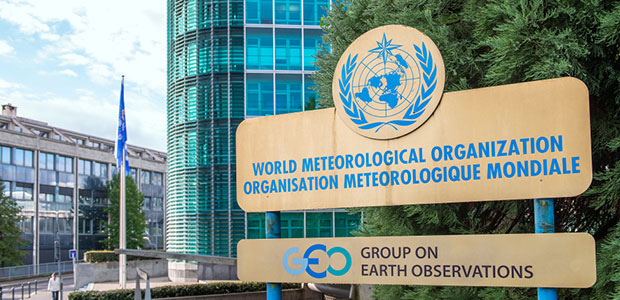
The 2019 WMO State of the Global Climate Report: Key Takeaways from the Worrying Report
At the COP25 this week, the World Meteorological Organization (WMO) issued its annual report on the state of global climate change. The data-heavy results are notable, and alarming.
Climate change and global warming rages on, and humans scramble to figure out what to do about it. This week's UN Convention on Climate Change in Madrid, Spain was yet another forum to discuss what global efforts can be made to effect change. The recently released WMO Provisional Statement of the State of the Climate for 2019 provided substantial scientific backing that climate change is happening, and it called for unsurprising action: change, and fast.
Every year, the WMO releases a report on the state of the global climate to help global policy makers understand the science and data behind this big topic of climate change and global warming. This year’s 34-page report provides substantial data and research that are notable and alarming on their own. However, it poignantly analyzes this data to give the reader the most important takeaways about what is happening with our Earth, and why.
Before we dive into its key takeaways, it’s important to realize the overall reason behind the report and its findings. Backed by extensive research and written by a globally acclaimed organizations and scientists, this report screams one reality: we are running out of time, and drastic change is needed now.
“Things are getting worse,” said Petteri Taalas, Secretary General of the world Meteorological Organization. “It’s more urgent than ever to proceed with mitigation.”
Fast change means immediate, drastic measures too. He continued, “The only solution is to get rid of fossil fuels in power production, industry and transportation.”
The following are included in the WMO annual report as “Key Messages,” and they are worth some serious consideration:
Greenhouse gases. Global atmospheric concentrations of greenhouse gases reached record levels in 2018, with CO2 reaching 147 percent of pre-industrial levels, and data indicates levels will continue to increase. Methane and nitrous oxide also reached record-breaking levels last year.
In terms of the mean temperature for January to October 2019, it was one degree above pre-industrial levels. Now, this might not seem like much, but even minute changes in global temperature have intense affects. 2019 is predicted to be the 2nd or 3rd warmest year on record, and since 1850, each successive decade has been warmer than any preceding decade.
Rising oceans. What exactly does “rising sea levels” even mean? Well, the ocean’s tides are actually rising, and for a number of reasons. The ocean absorbs 90 percent of the heat trapped in the Earth’s atmosphere by rising concentrations of greenhouse gases. Levels of ocean heat accumulation reached—yep, you guessed it—record levels in 2019.
As the ocean warms, sea levels rise. The rise is also due in part to melting ice on land which flows to the sea. Melting ice sheets on Greenland and Antarctica are large contributors to this flow.
And warm, high waters are not the end of it. An increase in CO2 in saltwater reacts decreases its pH, causing a process called ocean acidification. Observations from open-ocean sources over the last 20 to 30 years show a clear decrease in average pH at a rate of 0.017—0.027 pH units per decade since the late 1980s. Ocean acidification affects ecosystems and aquatic life in a number of ways.
Extreme heat conditions. The rising temperatures are not specific to the oceans—overall spikes in heat around the globe are taking a toll on human health and health systems. Greater impacts are recorded in locations where extreme heat occurs in contexts of aging populations, urbanization, urban heat island effects, and health inequities.
The report also mentions other human crises as direct effects of climate change and climate disasters. Global hunger rates have gone up as extreme weather events are driving global hunger rates and severe food crises. Over 820 million people suffered from hunger in 2018.
Plus, more than 10 million new internal displacements were recorded between January and June 2019. Natural disasters are largely to blame, and hazards, floods, and storms caused the most cases of displacement in 2019. Seven million displacement cases were triggered by hydrometeorological events including cyclones, hurricanes, and flooding—all of which generate acute humanitarian and protection needs.
“Climate-related natural disasters are becoming more frequent, more deadly, more destructive, with growing human and financial costs,” said United Nations Secretary General António Guterres at the UN climate conference.
The report goes in depth on all of these topics, providing substantial scientific research to not only back up climate change claims and trends, but also to indicate how many of these elements are related to one another.
The reality of this climate emergency is, of course, the focus of this week’s climate conference. It’s the solutions, and the shared sense of urgency about the solutions, that causes trouble and prevents solutions from coming to fruition.
The WMO’s report gives undeniable evidence of how the Earth is changing and how humans will be affected. Now we need to really do something about it.